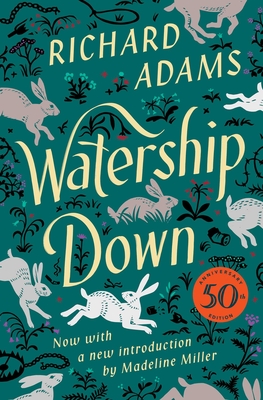Watership Down
Richard Adams

I picked up “Watership Down” from the library because of a brief reference in Stanley Hauerwas’s book “Truthfulness and Tragedy”:
“In brief, my political claims are best exemplified by Richard Adams’s portrayal of Hazel’s warren in ‘Watership Down.’ For what makes Hazel’s warren good, in comparison to the others pictured in the book, is the rabbits' willingness to be a community formed by the stories that have given them the skills and confidence to make use of luck. In such a community the diversity of gifts is welcomed because the narrative that gave direction to the community also provided a sense of equality that encouraged differences. Of course Adams’s ‘Watership Down’ is not political theory, but it at least gives an indication of the kind of concerns with which I think political theory must begin to deal."
I was fascinated to see such an incisive philosophical thinker leaning so directly on what I thought of as a children’s book. I had never read the book as a kid, and my only relevant memory is that I recall very clearly watching a cartoon version that scared me quite a bit. I have very few vivid memories from childhood but I do very clearly remember a scene from this cartoon of a rabbit slashing another rabbit with claws and leaving three bright red gashes–probably the scene where Bigwig fights General Woundwort.
At any rate, I am very glad to have read this book, and very much look forward to reading it to my kids one day. It strikes a good balance between being fun enough for kids and substantial and engaging enough for grownups, sort of like the books of “His Dark Materials.” It is not short (nearly 500 pages) but it is a fairly easy read. Each chapter has an epigraph, most from very serious works of literature from Xenophon’s “Anabasis” to Robert Browning.
I agree with Hauerwas that the stories recounted by the rabbits in the book are Adams’s most meaningful way of illustrating their culture and values. They are entertaining and I found at least one (“The Story of El-ahrairah and the Black Rabbit of Inle”) to be extremely interesting and compelling. Adams does a great job of constructing a believable and self-consistent culture with values that are significantly different from our own–for instance, high respect accorded to trickery, but relatively low value on individual lives when death does arrive.
Hazel himself is an inspiring figure of a leader for me–extremely thoughtful, accomplishing most of his successes by empowering those around him. Hauerwas says that WD is not political philosophy, but I don’t think he really believes it and neither do I. The warrens of Cowslip and Woundwort as foils to Hazel’s have a lot to say about communal and individual virtue as well as the meaning of “the good life”.